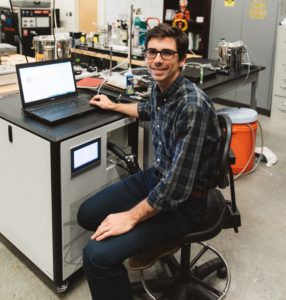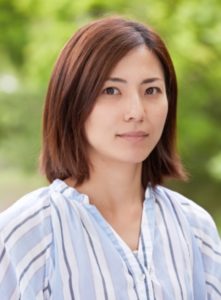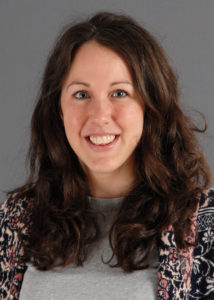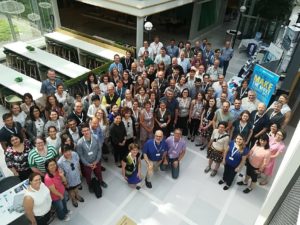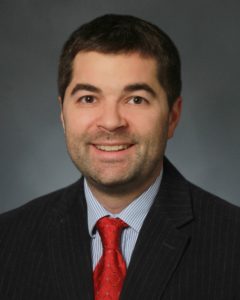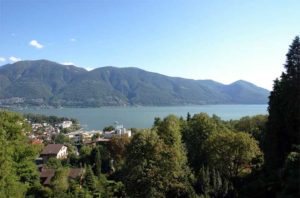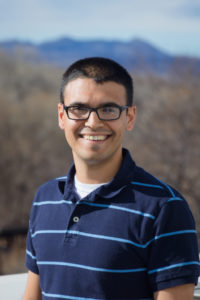 Shantanu Jathar is an Assistant Professor in Mechanical Engineering and also an affiliate of the Energy Institute at Colorado State University. He leads the Laboratory for Air Quality Research (http://tinyurl.com/aerosol-csu) that performs research at the intersection of energy and the environment. By leveraging laboratory and field experiments and regional air quality models, his group studies the atmospheric evolution and properties of air pollutants arising from energy and combustion systems, all in the interest of addressing future energy and environmental policy. He has a Ph.D. from Carnegie Mellon University where he used numerical models and laboratory experiments to understand the atmospheric formation of organic aerosols from combustion sources. He worked as a post-doctoral scholar at the University of California, Davis where he worked on improving the treatment of particulate matter in air quality models used for regulatory purposes. Shantanu hails from the suburbs of Mumbai, India. He is married to Poorva (an electrical engineer) and is enjoying parenthood with two energetic sons. In his spare time, he likes to run, bike, hike, and play the bansuri (bamboo flute).
Shantanu Jathar is an Assistant Professor in Mechanical Engineering and also an affiliate of the Energy Institute at Colorado State University. He leads the Laboratory for Air Quality Research (http://tinyurl.com/aerosol-csu) that performs research at the intersection of energy and the environment. By leveraging laboratory and field experiments and regional air quality models, his group studies the atmospheric evolution and properties of air pollutants arising from energy and combustion systems, all in the interest of addressing future energy and environmental policy. He has a Ph.D. from Carnegie Mellon University where he used numerical models and laboratory experiments to understand the atmospheric formation of organic aerosols from combustion sources. He worked as a post-doctoral scholar at the University of California, Davis where he worked on improving the treatment of particulate matter in air quality models used for regulatory purposes. Shantanu hails from the suburbs of Mumbai, India. He is married to Poorva (an electrical engineer) and is enjoying parenthood with two energetic sons. In his spare time, he likes to run, bike, hike, and play the bansuri (bamboo flute).
Read his latest Emerging Investigator Series “Oxidative Potential of Diesel Exhaust Particles: Role of Fuel, Engine Load, and Emissions Control” and find out more about him in the interview below:
Your recent Emerging Investigator Series paper focuses on oxidative potential of diesel exhaust particles and the role of fuel, engine load, and emissions control. How has your research evolved from your first article to this most recent article?
My first project, as a graduate student at Carnegie Mellon University nearly a decade ago, examined the influence of an updated treatment on the global distribution of organic fine particles in a climate model. This study was motivated by the need to reduce the large uncertainties linked to fine particles in climate models. Over the years, my research interests have broadened to think about the impacts of fine particles on human health. In this study, we probed how the oxidative reactivity (proxy for toxicity) of particles generated by a modern-day diesel engine varied as we changed the fuel and engine operation. We found that biodiesel and the use of an emissions control device (particle filter) significantly lowered the oxidative reactivity of diesel exhaust particles and we suspect that the reduced oxidative reactivity might be from lower soot emissions. Our work provides some evidence that wider adoption of biofuels and stricter regulations on diesel vehicles may reduce their harmful impacts on human health.
What aspect of your work are you most excited about at the moment?
It has to be wildfires. Wildfires are a growing concern in the western United States as rising temperatures have been linked to more frequent and bigger wildfires. Unlike burning fossil fuels in a controlled environment (think of the internal combustion engine), the variability in fuel and environmental conditions under which fires burn results in large variability in their emissions. As a result, there are large uncertainties surrounding the atmospheric evolution and impacts from wildfire emissions. We have a project supported through the National Oceanic and Atmospheric Administration (NOAA) where we are studying the atmospheric evolution of wildfire emissions in a controlled environmental chamber and using computer models trained on the laboratory data to predict the evolution in real wildfire plumes.
In your opinion, what are the most important questions to be asked/answered in this field of research?
Fine particles when inhaled deposit in our respiratory system and have been linked to lung and cardiovascular disease. However, little is understood about what properties of the particle — defined by their size and composition — are responsible for those diseases and how they might affect different individuals over different periods of time. This, I believe, is an open question and we are not going to figure the answer to this anytime soon.
What do you find most challenging about your research?
Very broadly, I study the sources and impacts of air pollution arising from energy and combustion sources. What I find most challenging with this research area is to keep abreast of the breadth and depth of topic areas it encompasses: physics, chemistry, biology, mathematics, engineering, statistics, public health, and more. Thankfully, the vastness is humbling and I rely on collaborations with some very smart people at Colorado State University and elsewhere to bring their expertise to the topic.
In which upcoming conferences or events may our readers meet you?
I usually don’t miss the annual American Association for Aerosol Research Conference (AAAR), which will be in Portland, OR this year in October. It’s the perfect place to get my scientific fix for fine particle research and catch up with collaborators and colleagues.
How do you spend your spare time?
My wife and I have a 5.5 and a 1.5 year old and we like to spend as much time as we can get with them when we are not working. Summers are the best because we spend a lot of time outdoors hitting the trails and pools.
Which profession would you choose if you were not a scientist?
I have thought about this question a lot and my answer hasn’t changed in a while. I would like to host and produce a science radio show, similar to Radiolab, that mixes physical and social sciences with personal stories. The one thing I would do differently would be to focus on geographies, cultures, and topics relevant to the developing world.
Can you share one piece of career-related advice or wisdom with other early career scientists?
The one thing I would tell early-career scientists is that don’t take any advice (including this one!) too seriously. Listen, but forge your own path. Don’t be afraid to make mistakes and don’t hold any regrets.











 The
The 